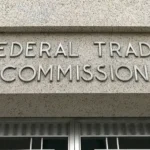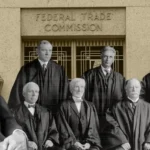
The Environmental Protection Agency (“EPA”) has set out to slash automobile emissions by way of regulatory fiat. Last week, Landmark Legal Foundation filed a regulatory comment to challenge this unlawful assault on the American economy.
Through the Proposed Rule entitled “Multi-Pollutant Emissions Standards for Model Years 2027 and Later Light-Duty and Medium-Duty Vehicles,” the EPA is proposing restrictive new emissions standards for vehicles manufactured by American companies. These new restrictions would force manufacturers to invest more money into developing technology that meets EPA emissions standards. The costs of developing new technologies would then be passed on to consumers and shareholders. The stated intent of this Rule is to reduce greenhouse gas emissions and curb climate change. In reality, the Administration is attacking the auto industry in every way it can, to try to force electric cars into becoming the better financial choice for consumers. Eventually, regulations like this will make electric vehicles the only affordable option.
Landmark’s regulatory comment honed in on legal shortcomings with how the EPA justified its
Rule. When performing the legally required analysis to calculate the costs and benefits, the EPA uses a carbon metric calculated by a so-called Interagency-Working Group (“IWG”). These metrics, known as the social costs of greenhouse gas (“SC-GHGs”) are monetary valuations for calculating the overall cost of releasing one ton of greenhouse gas into the atmosphere. These valuations include virtually every external cost of additional carbon dioxide, nitrous oxide, and methane present in the environment.
Despite their sweeping legislative intentions, the IWG did not have the authority to implement the legally-binding SC-GHG metrics in the first place. The Working Group was created by President Biden under Executive Order 13990, which gave the IWG the powers of an administrative agency. But the IWG is not vested with any statutory authority to act as an executive agency. In fact, Executive Order 13990 fails to cite a single specific statute authorizing the creation of such a Working Group.
Landmark further identified that the IWG bypassed the process of notice-and-comment, the process of federal policymaking required under the Administrative Procedure Act. By bypassing notice-and-comment in publishing its SC-GHG valuations, the IWG violated an indispensable part of the federal regulatory process.
Further exacerbating its affronts against the separation of powers, beyond its illegitimate administrative basis, the EPA’s Proposed Rule also violates the Supreme Court’s Major Questions Doctrine. Per the EPA’s own projections, this tailpipe emissions regulation would cost the public over $565 billion. This estimate falls well within the totals established by earlier Major Questions Doctrine Supreme Court decisions. Landmark maintains that levying such dramatic economic impacts via a federal regulation, without a clear delegation from Congress, nor adherence to notice-and-comment procedures, is not within the prerogatives of the executive branch.
The administration may be earnestly trying to reduce the amount of pollutants released into the atmosphere with these rules. But their method works by harming the existing auto industry and thereby propping up electric alternatives. Moreover, the emissions standards that are set to be promulgated by the EPA’s regulation would have far-reaching and deleterious economic effects. The proposed rule would put more stringent emissions standards on automobiles from model year 2027 and onward. The standards would effectively phase out internal combustion engines in favor of electric vehicles. By the EPA’s own estimates, the proposed rule could incur up to $565 billion in costs to the industry in future repair, maintenance, and fueling time. The regulation would prompt the conversion of the majority of the US auto fleet to electric vehicles, as well as the creation of necessary infrastructure to support these vehicles. This proposed rule would also make the US more reliant on foreign countries such as China for the raw materials and production necessary to meet new electric vehicle demands.
To prevent these harmful effects and to defend the rule of law, Landmark is proud to have taken a stand against this unlawful regulatory action.
Read the full regulatory comment here.
SUPPORT LANDMARK LEGAL FOUNDATION
We are truly facing existential threats to our individual rights and liberties, the Constitution, and our national character. If unchallenged, this assault on our very way of life will ruin our great nation. With your financial and moral support, Landmark is not going to let that happen without a fight. Will you join us?





